So far, Netflix remains the undisputed leader in the streaming industry, captivating more than 277 million subscribers worldwide. But beyond the sheer number of users, one question frequently arises – How does Netflix make Money?
Understanding the streaming company’s multi-faceted business model provides insights into how it generates billions in revenue each year. In this blog, we’ll delve into the foundational pillars of Netflix’s business model, and understand its revenue streams, cost structure, expenses, and profitability. Stay Tuned!!!!
Netflix’s Growth Journey
Since its launch in 1997 as a DVD rental service, Netflix has transformed into the largest video streaming service in the world. The growth journey of Netflix is remarkable, especially as it expanded its service globally and marked a strong presence across nearly every continent.
Global Subscriber’s Growth:
Netflix has over 277.65 million subscribers globally as of the second quarter of 2024. When Netflix launched its video streaming service in 2007, it had only 7.32 million subscribers worldwide.
In 2011, it reached 25 million global subscribers. Subscriber numbers grew to 100 million in 2017, driven by global expansion and original content. In 2021, Netflix surpassed 200 million subscribers, and since then it is roaring up high in the competitive video OTT market.
Netflix’s Subscribers Growth by Region:
According to Statista, Netflix has 84.11 million subscribers based in the US and Canada as of the second quarter of 2024. Netflix’s subscriber base across the US and Canada accounts for 30.32 % of the global share.
Netflix has seen rapid growth in the APAC region (particularly in Japan, South Korea, and India) with 45.34 million digital streaming subscribers, accounting for 17.42% of Netflix’s global share.
Netflix’s Latin America market has 46 million paid members, and is one of its significant penetration, with Brazil and Mexico leading in subscribers.
In the EMEA region, Netflix’s growth is outstanding with 88.81 million subscribers accounting for 34.12% of Netflix’s global paying customers.
Netflix’s revenue has seen exponential growth over the years. If you would ask how Netflix makes money, the major factors would refer to subscriber growth, price increases, and strategic expansion. Netflix earned $33.72 billion in annual revenue in 2023, a 6.78% increase from last year’s revenue of $31.62 billion.
In 2017, Netflix generated $11.69 billion in revenue. The streaming giant’s revenue grew to $24.99 billion by 2020.
Currently, in 2023, the US and Canada remain Netflix’s largest markets by revenue followed by the EMEA region (Europe, Middle East, and Africa).
Launch a platform like Netflix in minutes – Click here to Launch!!!
How Does Netflix Work?
Netflix, the world’s leading video streaming platform, delivers billions of hours of content to over 277 million users across the globe. But behind its seamless content delivery lies a highly sophisticated technical infrastructure and cutting-edge streaming technology.
As viewers hit play on their favorite shows, Netflix’s automated OTT infrastructure works tirelessly to ensure instant playback, high-quality video, and minimal buffering regardless of network or device.
Let’s delve into how Netflix works from a technical perspective.
State-Of-The-Art Cloud Server Infrastructure:
Netflix’s cloud infrastructure is powered by Amazon Web Services (AWS). The entire OTT framework is cloud-based and has micro-services architecture for independent functionality i.e. content delivery, encoding, transcoding, online video player, recommendation engine, etc…
Netflix’s proprietary CDN – Open Connect, is designed to optimize video delivery and reduce latency. It uses the local caching method through nearby data centers to ensure seamless video streaming without any compromise.
Cutting-Edge Streaming Technology
Netflix follows a high-standard encoding approach by adopting more efficient video codecs like AV1, which saves bandwidth while maintaining video quality.
The video streaming giant has also adopted the trends of Adaptive Bit-rate streaming to support seamless streaming across various devices and network conditions.
By developing custom UIs and apps for different streaming ecosystems, Netflix ensures compatible streaming on Smartphones, Smart TVs, tablets, game consoles, and more.
Netflix’s performance on mobile devices is one of the significant factors behind its increasing number of subscribers. Enhanced interactivity through advanced search functions, easy-to-use dark-themed UI, wishlist, and offline viewing also cater to Netflix’s user-friendliness.
Automated Data Processing and Personalized Recommendations
Netflix’s machine learning system is constantly capturing user’s behavior and preferences. The algorithm auto-analyses and stores all the data sets and helps continually improve the user experience through A/B testing with thumbnails, user interfaces, and even content order for different viewer segments.
Netflix’s evolving recommendation engine uses this machine learning system to analyze viewing habits, history, content choices and accordingly personalizes content suggestions and viewing experience for each user.
Though Netflix is a media company, the way it has developed its technological foundation, it has managed to influence streaming trends and technology. Understanding how Netflix works is the secret to reliability, scalability, and unparalleled user experience in the world of video streaming.
How Much Money Does Netflix Make?
Netflix’s revenue and profitability have been impressive as the company has grown into one of the largest video-streaming platforms in the world. In 2023, Netflix generated $33.72 billion in annual revenue, 6.78% more than it made the previous year.
In 2022, Netflix earned approximately $31.6 billion in revenue. The year-over-year revenue stats of Netflix has been increasing with an average growth rate of 7.2%.
Is Netflix Profitable?
Yes, Netflix makes a very good profit. In the previous financial year, i.e. 2023, Netflix’s profit marked 5.4 billion dollars. In 2022, it posted a net income of $4.5 billion while in 2021 the profit surged to $5.11 billion, largely because of the Covid-19 lockdowns.
The average monthly revenue Netflix makes from its paying subscribers worldwide is $11.64 in 2023. However, the ARPU (Average Revenue Per User) varies by geography. For the US and Canada region, the ARPU is typically higher, hovering around $16- $17 due to high subscription fees.
In the EMEA region, Netflix makes around $12 – $13 monthly revenue from each member. The ARPU is lower for Latin America and APAC regions, ranging between $8 to $9.
Overall Netflix’s financials have been inspiring so far, and the giant video-streaming platform is making whopping profits year after year.
Build a secure and scalabale video streaming platform like Netflix. Sign-up now!
How Does Netflix Make Money? – Netflix Business Model Explained
Netflix has a sophisticated and diversified business model that has evolved over time. What started as a simple subscription-based video-streaming service has grown into a multi-billion dollar business with multiple revenue streams. Netflix’s business model is primarily centered around subscription fees, but it has expanded into content licensing, advertising, and strategic collaborations.
Let’s take a close look at the core component of Netflix’s business model and understand how does Netflix make money.
Subscription-Based Revenue: The Core of Netflix’s Monetization
A majority of Netflix’s revenue comes from subscriptions. The video streaming company charges a recurring monthly fee in exchange for unlimited access to its extensive content library.
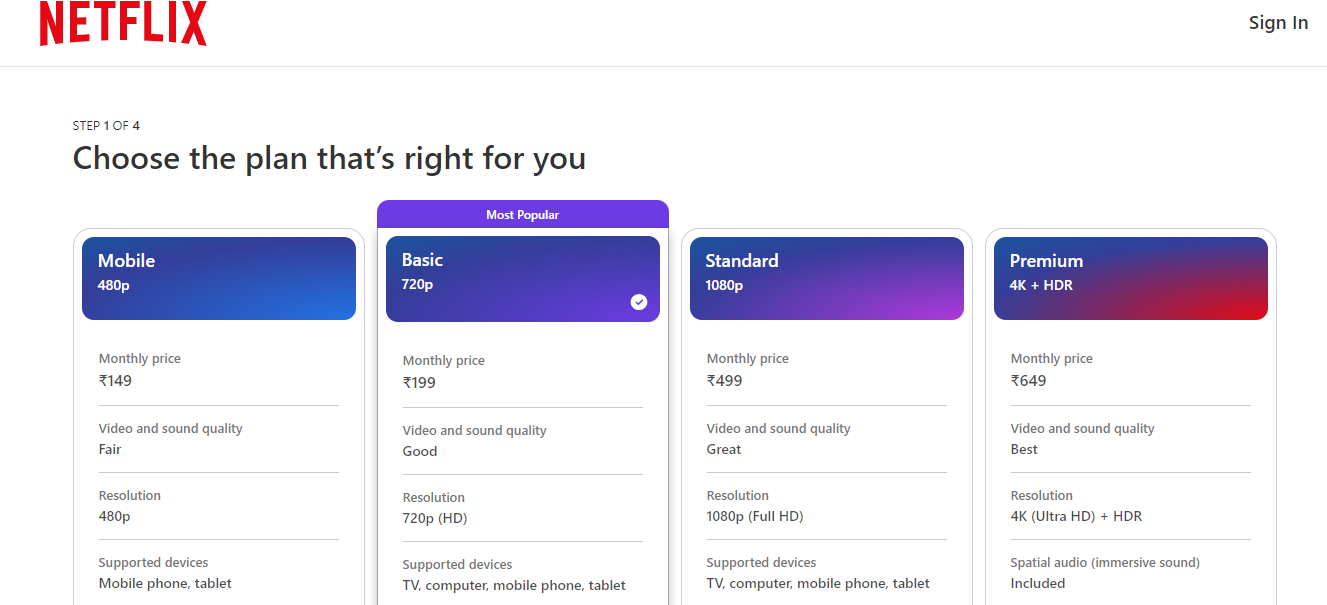
Currently, Netflix offers tiered subscription plans: Mobile Only Plan (exclusive to India), Basic Plan (SD streaming), Standard Plan (HD streaming), and Premium Plan (4k Ultra HD streaming) to cater to different types of users.
The platform also periodically raises its subscription charges to balance out its increasing investments in technological improvement and content production. This helps Netflix maintain profitability, even as costs rise.
Content Licensing Revenue:
In the early years, Netflix relied heavily on third-party licensing deals with content producers like Disney, Warner Bros, and NBC Universal. While this method still pays, the video streaming platform has pivoted towards creating its own content to reduce dependency on costly content licensing deals.
Recently, Netflix has become a major content producer with its original movies & shows and has started to license its original productions to other streaming platforms, Networks, or TV channels in certain markets, where its platform is not as dominant.
By licensing its original content, Netflix creates additional revenue streams while also increasing the global visibility of its Originals.
Netflix also makes money by releasing exclusive movies, series, or documentaries on its streaming platform. There are many content producers or filmmakers who prefer an OTT release on Netflix rather than releasing the content on the big screen.
Localized Content Strategy:
The secret to Netflix’s international growth lies in leveraging localized content. The production of localized content provides new opportunities for Netflix to license or co-produce content with local studios and production houses, opening up another revenue stream.
For penetration into highly competitive markets such as South Korea, Japan, India, and Brazil, Netflix has ventured into region-specific shows or movies to attract local subscribers. Localized content like Money Heist (Spain), Sacred Games (India), and Squid Game (South Korea) have greatly helped Netflix garner local subscribers and also expand globally.
In addition to content localization, Netflix modifies its subscription tiers based on regional economic conditions. For example, it has launched a Mobile-Only plan for countries like India, where smartphone penetration is higher, but the income levels are low.
Such localization strategies have helped Netflix to capture price-sensitive competitive markets while still generating revenue.
Strategic Partnerships For Expanding Netflix’s Reach:
How does Netflix make money? Strategic partnerships or collaborations are one of the significant answers to Netflix’s revenue.
Partnering with Internet Service Providers and Telecom Operators, Netflix has tapped into a new segment of users. By bundling its subscription plans with Internet providers and Telecom services, Netflix gets access to customers who may not have signed up for the video streaming service otherwise.
Netflix has also partnered with smart TV manufacturers, smartphone companies, and streaming devices like Roku and Amazon Fire TV to have its app pre-installed on the devices. These collaborations not only extend Netflix’s reach but also simplify the onboarding process for new subscribers, enhancing the scope for customer acquisition.
Ad-Supported Tier: A New Revenue Frontier
Competitors like Disney+ and Hulu already offering ad-supported models and Netflix recognized the need to match these offerings to remain competitive in price-sensitive markets.
In 2022, Netflix introduced a new ad-supported tier to target more price-conscious users. This model helps attract subscribers who are unwilling to pay for subscription plans but are open to viewing ads. The ad-revenue model is relatively new and being tested in different markets, but for sure this could open a significant revenue stream for Netflix in the coming years.
Data-Driven Personalization For Customer Retention:
Netflix leverages data analytics to enhance the user experience, leading to higher customer satisfaction, longer retention, and reduced churn.
Netflix collects vast amounts of data on user preferences, viewing habits, and content interaction. This data is used to personalize the content recommendations that users see on their home screen, increasing the likelihood that they will find content they enjoy.
The user data is also used to identify which genres, themes, and types of shows or movies are performing well in terms of engagement as well as revenue. Accordingly, Netflix invests in those content types to retain its paying subscribers.
Well, this is the foundational business model of Netflix. No, doubt, the video streaming giant has built a diversified and resilient approach to revenue streams. However, the earnings or revenue do not give the complete picture of how does Netflix make money. It is also essential to consider Netflix’s expenses in maintaining the platform and delivering quality content to its subscribers.
Create Netflix-like video streaming platform with Muvi One – Click Here!!!
What Does It Cost To Run Netflix?
While Netflix generates significant revenue, the streaming company incurs substantial expenses to keep its platform running among all the competition. Most of Netflix’s expenses are related to content creation or acquisition and technological infrastructure.
Let’s understand Netflix’s cost structure and expenses in detail.
- Content Spendings: Netflix spends a huge amount on content production and acquisition. In the last 5 years, Netflix’s average spending on content is $17 billion annually. This involves both content licensing and production costs.
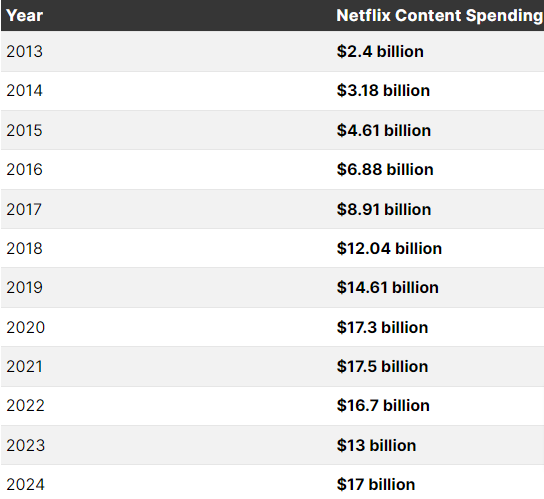
- Infrastructure and Technology Cost: Netflix spends around a billion dollars every year to incur the costs of servers, CDNs, and cloud data security services. The streaming company continuously invests in optimizing its platform for seamless video delivery to users, regardless of geography, internet connection, or device.
- Marketing and Subscriber Acquisition Cost: With increasing competition, Netflix has ramped up its marketing spending to attract new customers and retain the existing ones. Promotions, partnerships with a reputable development agency, and advertising costs are all part of this growing expenditure.
- Research and Development Cost: Back then in 2007, Netflix was the first media company to leverage streaming technology and deliver on-demand videos to users via the Internet. It has always prioritized R&D in technology and even today also Netflix spends a huge amount on Machine Learning and AI-based solutions to enhance the platform’s performance.
After all these hefty yet mandatory expenses, Netflix is still profitable. Last year, Netflix recorded a whopping profit of $5.4 billion.
Key Takeaways from Netflix’s Growth Journey
- Be adaptable to market changes and emerging technologies:
Netflix was originally not a streaming service. In 2007, it launched its streaming service seeing that online streaming was the future as internet speeds improved. The willingness to pivot and invest in future technologies is the key to scale.
- Invest in scalable cloud-based infrastructure:
Netflix shifted its streaming infrastructure to AWS in 2010, transitioning to a cloud-based micro-services architecture. This helped Netflix scale globally and handle millions of concurrent streams.
- Provide a personalized user experience to enhance engagement:
Netflix’s user interface is intuitive, visually appealing, and easy to navigate. This ensures Netflix provides a seamless experience across all devices – smartphones, smart TVs, tablets, and desktops…
- Build a diverse and strategic content library with original programming:
While licensed content can be a good starting point, investing in original content is crucial for long-term success in the video streaming industry. Netflix moved from relying on licensed content to creating original shows and movies (Stranger Things, House of Cards, The Crown). This helped differentiate Netflix from its competitors and reduce dependency on external studios.
- Use data for content decisions, and recommendations:
Netflix leverages user data to improve content, marketing, and UX. From content creation decisions to implementing A/B testing on features & functionality, Netflix makes the best out of data-driven decision-making.
- Explore various revenue streams but keep the user experience premium:
For many years, Netflix maintained a no-advertisement policy and relied on a simple, subscription-based model. Now it has started experimenting with ad-supported tiers and low-cost plans, but without making any compromise with its premium, uninterrupted viewing experience.
With these lessons from Netflix’s growth journey, you can build a successful, scalable video streaming platform that resonates with users while remaining competitive in an evolving streaming landscape.
Hope you have a clear picture of how does Netflix make money and its net worth.
Muvi can help you launch your own branded white-label video streaming service like Netflix. You don’t have to build the OTT platform from scratch, the entire streaming infrastructure is already built and ready to use. Sign up, select your Muvi subscription, and start streaming. Take a 14-day free trial to check and test Muvi One’s OTT platform.

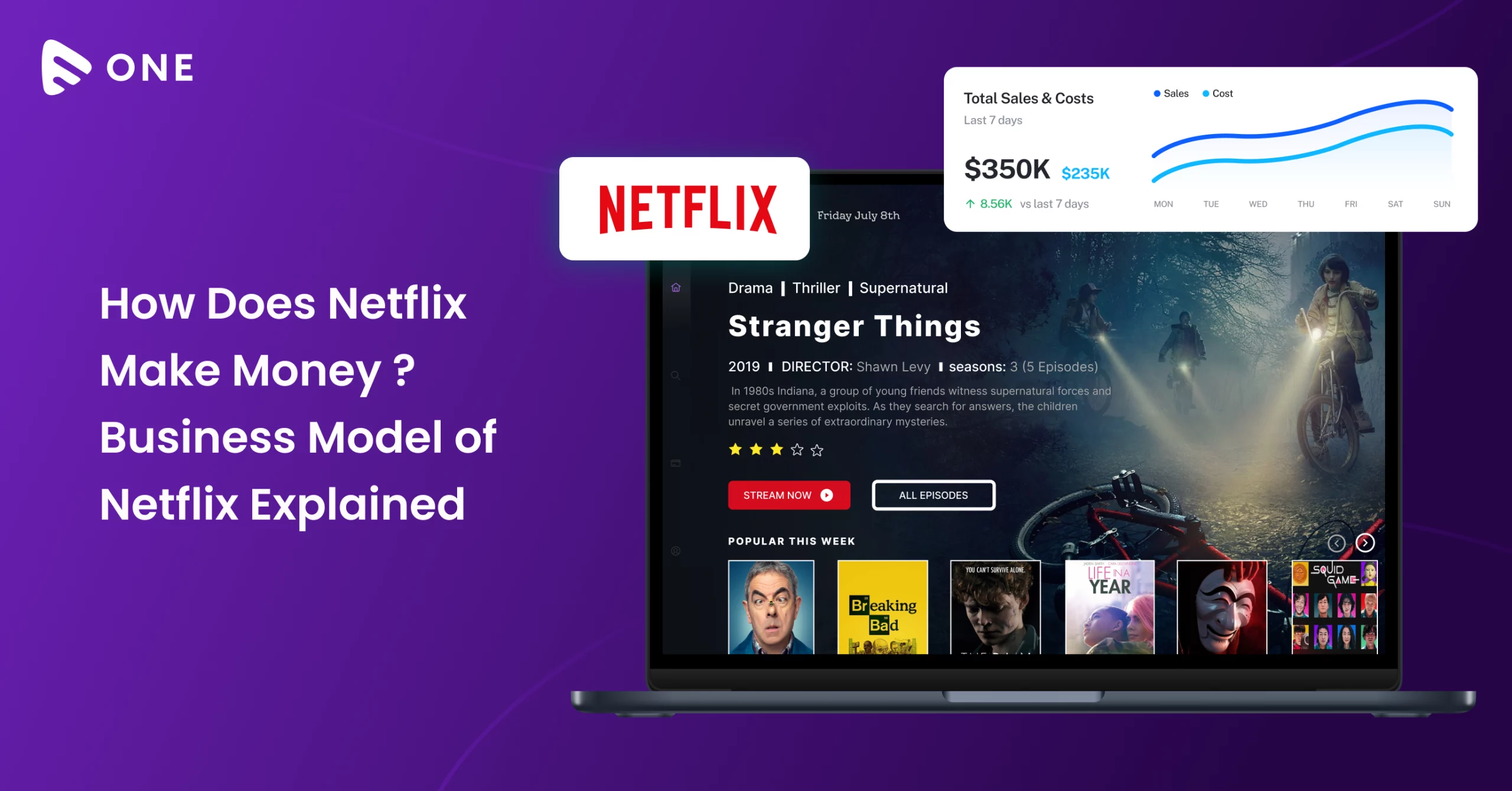











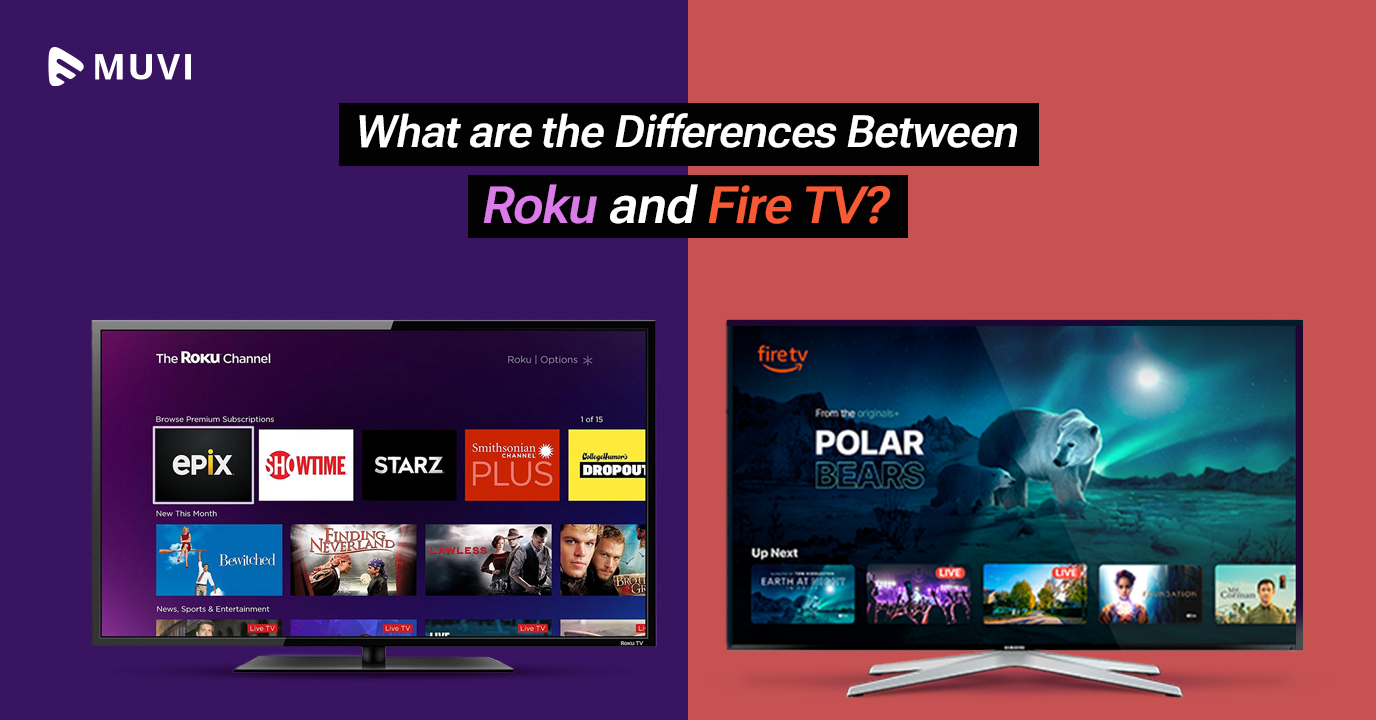
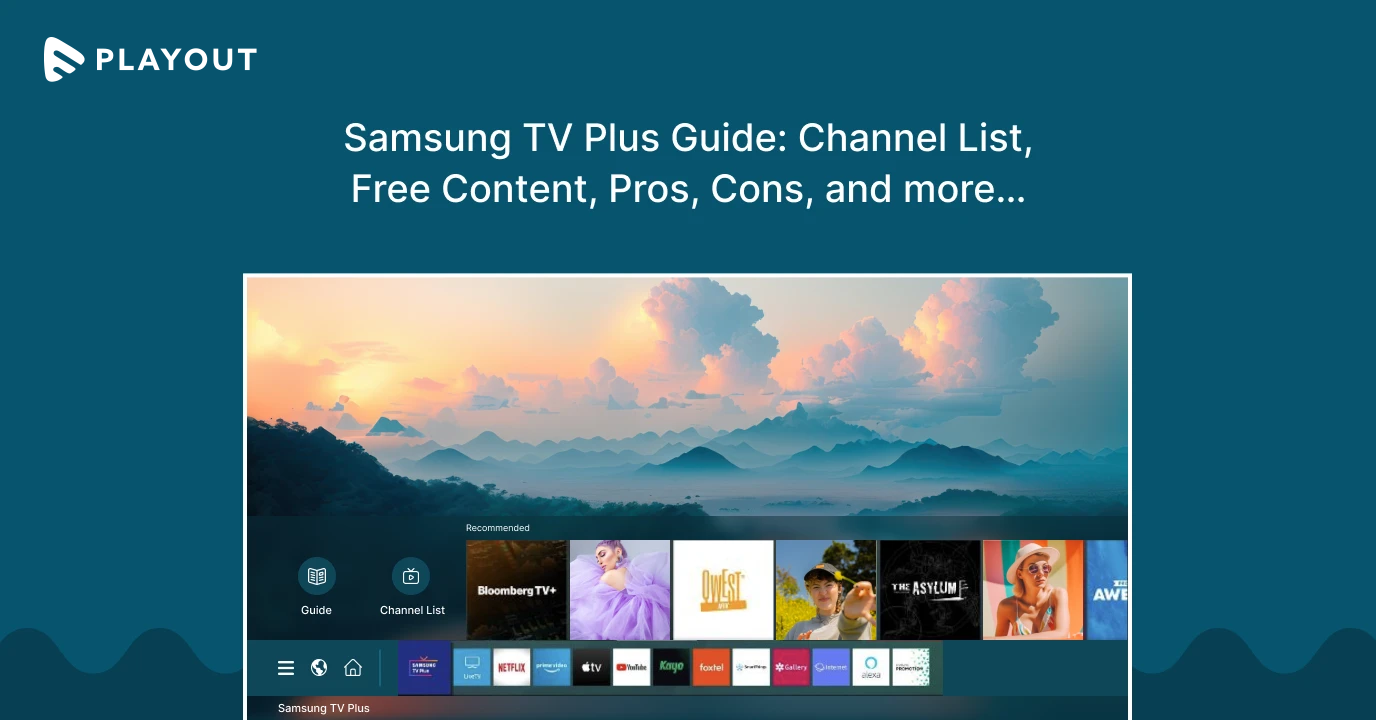
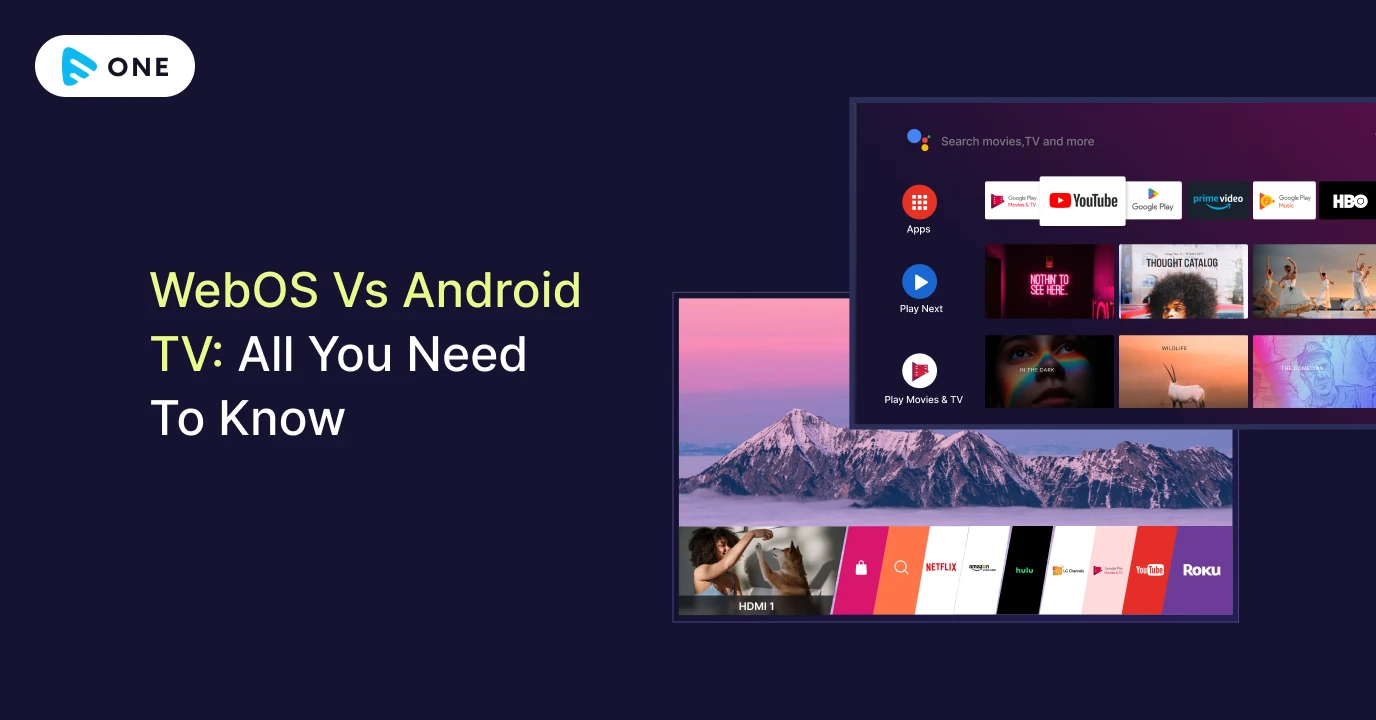



Add your comment